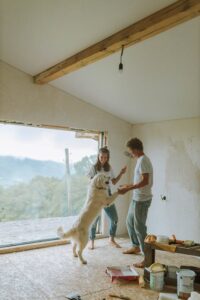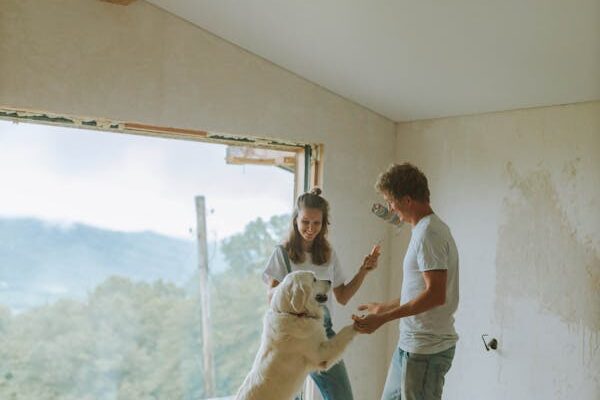
Table of Contents
- Introduction
- Choosing the Right Space for Your Pet
- Pet-Proofing Your Home
- Remove Hazardous Items
- Secure Electrical Cords
- Store Chemicals Safely
- Setting Up a Comfortable Living Area
- Bedding and Resting Spaces
- Food and Water Stations
- Gathering Essential Supplies
- Food and Treats
- Toys and Entertainment
- Grooming Tools
- Creating a Safe Outdoor Space
- Establishing a Routine
- Introducing Your Pet to Family Members
- Preparing for Training and Socialization
- Stocking Up on Cleaning Supplies
- Finding a Trusted Veterinarian
- Understanding Your Pet’s Specific Needs
- Emergency Preparedness for Pets
- Patience and Adjustment Period
- Conclusion
- FAQs
Introduction
Bringing a new pet home is an exciting experience, but it requires careful preparation to ensure a smooth transition. Whether you’re adopting a playful puppy, a curious kitten, or a small pet like a rabbit or hamster, creating a safe and welcoming environment is essential. This guide will walk you through everything you need to know to prepare your home for your new furry friend.
Choosing the Right Space for Your Pet
Before your pet arrives, decide where they’ll spend most of their time. Designate specific areas for sleeping, eating, and playing. This helps your pet feel secure and makes it easier to manage their activities.
Pet-Proofing Your Home
Remove Hazardous Items
Pets are naturally curious and might chew or swallow dangerous objects. Remove small items, toxic plants, and anything fragile from areas your pet can access.
Secure Electrical Cords
Tuck away or cover electrical cords to prevent chewing, which could cause electric shocks or fires.
Store Chemicals Safely
Household cleaners, medications, and chemicals should be stored in locked cabinets out of your pet’s reach.
Setting Up a Comfortable Living Area
Bedding and Resting Spaces
Provide a cozy bed or crate where your pet can relax and feel safe. Choose bedding suitable for their size and breed.
Food and Water Stations
Set up feeding areas with appropriate bowls for food and water. Stainless steel or ceramic bowls are easier to clean and more durable.
Gathering Essential Supplies
Food and Treats
Stock up on high-quality pet food and healthy treats that meet your pet’s dietary needs.
Toys and Entertainment
Provide toys that are safe and engaging to prevent boredom and destructive behavior.
Grooming Tools
Invest in grooming supplies like brushes, nail clippers, and shampoos suitable for your pet.
Creating a Safe Outdoor Space
If you have a yard, make sure it’s securely fenced and free from toxic plants or hazardous objects. For smaller pets, consider outdoor enclosures for safe playtime.
Establishing a Routine
Pets thrive on routine. Set consistent feeding, walking, and playtime schedules to help your pet adjust and feel secure.
Introducing Your Pet to Family Members
Introduce your pet gradually to family members and other pets. Supervise interactions to ensure everyone feels comfortable and safe.
Preparing for Training and Socialization
Start basic training early and expose your pet to different environments, sounds, and people. This helps prevent behavioral issues and promotes good social skills.
Stocking Up on Cleaning Supplies
Accidents happen, especially with young or new pets. Have cleaning products like enzymatic cleaners on hand to manage messes and maintain hygiene.
Finding a Trusted Veterinarian
Schedule a vet appointment soon after bringing your pet home. Regular check-ups and vaccinations are crucial for their health.
Understanding Your Pet’s Specific Needs
Research your pet’s breed or species to understand their unique needs, such as exercise requirements, dietary restrictions, and grooming habits.
Emergency Preparedness for Pets
Prepare for emergencies by keeping a pet first-aid kit and knowing the location of the nearest emergency vet clinic. Create an evacuation plan that includes your pet.
Patience and Adjustment Period
Every pet needs time to adjust to a new home. Be patient, offer reassurance, and provide positive reinforcement to help them settle in.
Conclusion
Preparing your home for a new pet ensures a smooth and happy transition for both your family and your furry friend. With proper planning, you’ll create a safe, comfortable, and loving environment where your pet can thrive.
FAQs
1. How long does it take for a pet to adjust to a new home?
It can take anywhere from a few days to a few months for a pet to fully adjust. Patience and consistency are key.
2. What should I do if my pet has accidents in the house?
Clean up accidents promptly with an enzymatic cleaner and reinforce proper bathroom behavior through training.
3. How can I make my pet feel more comfortable?
Provide a cozy space, establish a routine, and offer gentle affection and positive reinforcement.
4. Is it necessary to pet-proof every room?
Focus on the areas your pet will spend most of their time in, but it’s best to inspect your entire home for potential hazards.
5. What should I include in a pet first-aid kit?
Include bandages, antiseptic wipes, tweezers, gauze, and any medications your vet recommends.



